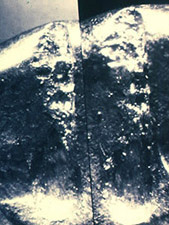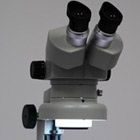Home | Glossary | Resources | Help | Contact Us | Course Map
Archival Notice
This is an archive page that is no longer being updated. It may contain outdated information and links may no longer function as originally intended.
Developments
Since 1925, significant advances and developments in the discipline of firearms identification have included
- optical systems and peripheral equipment for comparison microscopy,
- digital imaging and management,
- more formal and structured definitions of the criteria for identification,
- advances in computer hardware platforms and database software to link serial shootings,
- digitized ammunition reference resources available on the Internet and on storage media.
Prerequisites for Examination
Prior to conducting any examinations or microscopic comparisons of fired or unfired cartridge cases or shotshell cases, certain preliminaries should be addressed.
Laboratory Policies
Laboratory policies are followed, including
- chain of custody,
- laboratory safety,
- trace evidence,
- coordination of examination sequencing across disciplines to preclude loss of trace evidence,
- evidence marking and packaging.
Documentation
Basic descriptive information should be documented prior to any examination or comparison. A laboratory-approved worksheet may be available to allow for contemporaneous documentation.
Equipment
Stereo and comparison microscopes should be calibrated and maintained prior to examination.
Class Characteristics
Determination of class characteristics is performed according to laboratory protocol. (AFTE protocol recommendations can be requested from the AFTE website.)
Microscopic Marks
The evidence is examined to establish that it bears microscopic marks of value suitable for comparison. Although the marks are suitable for comparison, they may not be sufficient for identification. This is determined during the actual comparison.
Test Standards
Test standards (known standards) are obtained and appropriately marked and preserved. Many forensic firearms laboratories maintain a collection of known standards, referred to as the standard ammunition file (SAF). The goal of such a physical file is to determine what cartridge types and which manufacturer or marketer is represented by the evidence. The examiner should make use of the SAF in selecting and firing test standards in order to match physical characteristics and headstamps.
Examiners should always be aware that reference collections and database programs are seldom all inclusive; all available resources and examiners should be consulted.
Equipment
Although the comparison microscope is the basic tool of the trade for examination of evidence, there are a number of equipment items that may expedite the process, including
- range facilities,
- a variety of ammunition,
- appropriate containers for fired test standards,
- metal or electric scribes and permanent markers,
- stereomicroscope with a range up to approximately 30x,
- microscope lighting options,
- video monitor and live video/closed circuit television capability for the comparison microscope,
- imaging equipment to record and document areas of correspondence.
Imaging technology records a two-dimensional representation of a three-dimensional object and produces an image. However, an image alone does not constitute identification. Imaging remains the fastest and simplest method for documenting the examiners conclusion. Alternative techniques for documenting areas of correspondence include written narrative descriptions and hand-drawn sketches; these are time-intensive techniques.
A laboratory worksheet is used to record raw data contemporaneously as the examination progresses. This worksheet should document both class characteristic information and microscopic comparisons.
Additional Online Courses
- What Every First Responding Officer Should Know About DNA Evidence
- Collecting DNA Evidence at Property Crime Scenes
- DNA – A Prosecutor’s Practice Notebook
- Crime Scene and DNA Basics
- Laboratory Safety Programs
- DNA Amplification
- Population Genetics and Statistics
- Non-STR DNA Markers: SNPs, Y-STRs, LCN and mtDNA
- Firearms Examiner Training
- Forensic DNA Education for Law Enforcement Decisionmakers
- What Every Investigator and Evidence Technician Should Know About DNA Evidence
- Principles of Forensic DNA for Officers of the Court
- Law 101: Legal Guide for the Forensic Expert
- Laboratory Orientation and Testing of Body Fluids and Tissues
- DNA Extraction and Quantitation
- STR Data Analysis and Interpretation
- Communication Skills, Report Writing, and Courtroom Testimony
- Español for Law Enforcement
- Amplified DNA Product Separation for Forensic Analysts



